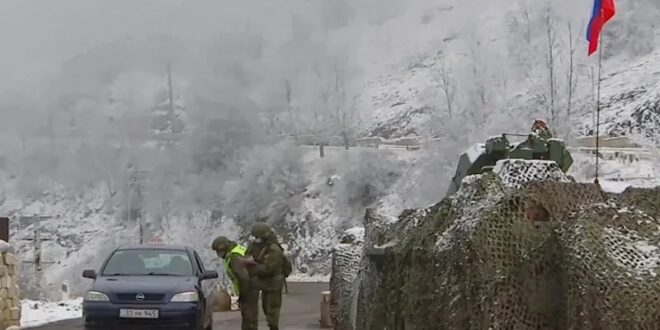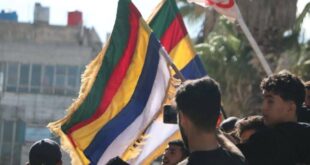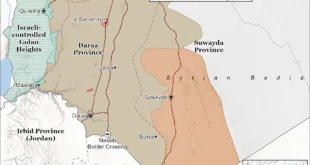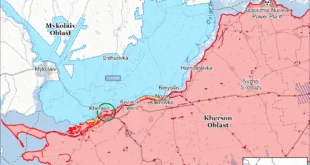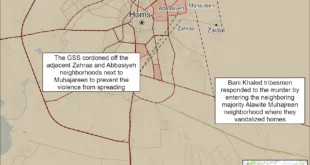When any objective observer looks at the geopolitical map of the world and its crisis hotspots sooner or later he will reach Nagorno Karabakh in the South Caucasus. This ethnically Armenian region within Azerbaijan has been the subject of a dispute between Armenia and Azerbaijan for a century. Because of it, two countries and two peoples have been at war for more than 100 years, of course at intervals.
Fragile peace reigns there for the most part, but wars and incidents occasionally break out, resulting in heavy casualties. What’s worse, that remote mountainous region is toxically poisoning Armenian-Azerbaijani relations, and there is no end in sight to the conflict. Although there are crisis hotspots around the globe, in terms of the use of force, the conflict in Nagorno-Karabakh can only be compared to the Israeli-Palestinian conflict. Even during the most peaceful periods, it is a matter of a week or a month when the blood of soldiers or civilians will be spilled.
General information about the province
The name of the province has interesting roots. The word nagorno means “mountainous” in Russian, while the word “karabah” is a combination of Turkish and Persian words that together mean “black garden”. The region is located between Lower Karabakh and Syunik on the southeastern massif of the Lesser Caucasus. Through Nagorno-Karabakh flow several small, fast-moving rivers that pass through mineral-rich country on their way to the central valley. The result is rugged but agriculturally rich land with a handful of forests. The area of the region is 4,400 square kilometers. That it is a mountainous area is indicated by the fact that, on average, the region is 1,100 meters above sea level. The capital is Stepanakert, which in practice is the capital of the unrecognized Republic of Artsakh.
The region does not directly border Armenia, but it is connected to it through the Lachin Corridor – a mountain pass that has been under the control of Russian peacekeeping forces since the end of 2020. The natural environment varies from the steppe in the lowlands to dense forests of oak, hornbeam and beech on the lower mountain slopes to birch forest and alpine meadows. The region has numerous resources such as mineral springs and deposits of zinc, coal, lead, gold, marble and limestone. Relatively close, somewhat further north, important oil and gas pipelines from the direction of Azerbaijan to Turkey and the European Union pass, therefore the energy importance of the province is visible. Any conflict threatens to disrupt Europe’s oil and gas supply.
Historical development
The Ottoman, Persian and Russian Empires have long considered Nagorno-Karabakh as part of the Caucasus Mountains, which formed a natural barrier against the attacks of other powers. The province has been home to Armenian Christians and Azeri Muslims since ancient times. Depending on which great power had power, it favored one nation at the expense of another. This helped build a firm enmity between the two very related Caucasian peoples. In the 19th century, the region was ruled by Tsarist Russia, which granted privileges to Armenians. That is why the Armenian Orthodox Christian population grew, while the number of Muslims continuously decreased, and they fled to Iran and Turkey. The Russian census of 1897 revealed that Nagorno-Karabakh was home to 43% Armenians and 55% Azeris.
The tension between the two nations grew under Russian rule. Pogroms claimed the lives of thousands of both nations during the chaotic Russian Revolution of 1905. This happened again on a much larger scale after the collapse of the Russian Empire in 1917. When the newly independent Azerbaijan claimed Nagorno-Karabakh in 1918, the province’s majority Armenian population resisted, forming the Armenian Karabakh National Council. British forces stationed in the region after the end of World War I provided support to Azerbaijan, hoping to break the country away from Soviet influence and gain access to significant oil reserves. Fearing a hostile environment, Karabakh Armenians attacked Azerbaijani garrisons in 1920. In response, the Azerbaijani army razed the Armenian quarter of Shusha, the largest city in the region, and thousands of Armenian civilians were killed.
Soviet times
While the Azerbaijani army was occupying Nagorno-Karabakh, it lost control of Baku in April 1920, which was occupied by the Bolsheviks. By 1921, the entire South Caucasus was under Soviet control. With the departure of the British, there were some indications that Nagorno-Karabakh would be transferred to the Armenian state, but the geopolitical situation changed in early 1921 with the normalization of relations between the USSR and Turkey. As a concession to Turkey (the Turks were afraid of a strong Armenian state), the province was incorporated into the Azerbaijan Soviet Socialist Republic as an autonomous province. This was foreseen by the Turkish-Soviet agreement on the normalization of relations.
However, it did not go smoothly either. The Soviet authorities formed the Kavburo (a seven-member commission for the South Caucasus) which on July 4, 1921 made a controversial decision to include Nagorno-Karabakh in the Armenian SSR! However, the very next day there was a protest by Azeri comrades, so Stalin only confirmed what had already been agreed with the Turks that the province would remain part of Azerbaijan. Stalin did not invent anything new, but only confirmed the observance of historical borders. Finally, a decree from Baku in July 1923 defined the province as part of the autonomous province of the Azerbaijan SSR. Nagorno-Karabakh received broad regional autonomy, the center was in Shusha, which was later transferred to Stepanakert.
The borders of the province were drawn to include Armenian villages and to exclude as many Azerbaijani ones as possible. However, the emigration of Azerbaijanis continued and by 1926 the province was 94% Armenian. The seasonal presence of Azeris in the region was further reduced during the collectivization campaigns of the 1930s. All this helped strengthen Armenian aspirations for territory.
The Armenian majority in the province soon resented what they saw as excessive Azerbaijani influence. Although the autonomous provinces in the Soviet Union were granted wide cultural and linguistic freedom, Armenian language teachers in Azerbaijan could study in Stepanakert or Baku, but Azerbaijani officials never gave them permission to study in the Armenian capital of Yerevan. The residents of Nagorno-Karabakh demanded greater autonomy, but the authorities of Soviet Azerbaijan persistently refused. Armenian birth rates began to decline and many left the region to work in larger cities. The rural population of the area was once again taking on an Azerbaijani character, aided by the republican government from Baku, which encouraged Azerbaijani settlement.
By 1979, Nagorno-Karabakh was approximately 25% Azerbaijani. This change exacerbated tensions again. Armenian and Azerbaijani historians at this time also began to propagate radically different views of the history and culture of the region, setting the stage for the coming conflict. That conflict would have to wait until the USSR entered its final phase of existence under Mikhail Gorbachev in the late 1980s. It should be noted that despite the ethnic tensions, as long as the USSR was strong, the province lived in peace.
The province is sliding towards war
Gorbachev’s policy of glasnost put the wind behind Karabakh secessionist demands for unification with Armenia in 1988. Later that year, ethnic conflicts erupted, and anti-Armenian riots claimed many lives in the Azerbaijani cities of Baku and Sumgait. Attacks on Azeris took place in Nagorno-Karabakh and then spread to Armenia. Moscow placed the province under a state of emergency in the winter of 1988, but the weakening Soviet state could do little to reconcile the two sides. The incidents became even more violent and by November 1989 the Soviets had come to terms with the situation, lifting the state of emergency without a clear peace plan.
The situation spiraled out of control after Azerbaijan declared independence from the USSR in October 1991, and Nagorno-Karabakh declared independence from Azerbaijan in December 1991 following a referendum in which 99% of voters opted for independence. Azeris boycotted the referendum. Armenia supported the secessionist aspirations of its compatriots, however, with the collapse of the USSR, the republic’s borders became interstate borders, so the issue of Nagorno-Karabakh became an internal issue of Azerbaijan. However, Armenia intervened and civil war between the two new nations began.
The first war for Nagorno-Karabakh
From the beginning of 1992 to the beginning of 1994, the first war for Nagorno-Karabakh was fought. An additional impetus to the war was given by the expulsion of the population: Armenians from Azerbaijan and Azeris from Armenia. Armenian troops focused their forces on Agdam, Fuzuli and Jabrayil districts. After a siege and heavy fighting, the Armenians captured Agdam and then Fuzuli and Jabrayil. These are strategically very important areas between Nagorno-Karabakh and the border with Iran.
At the same time, the Armenians consolidated control over the key Lachin Corridor, which connects the disputed region with Armenia. Although at the end of 1993, Azerbaijani troops launched a counter-offensive, it failed and did not bring significant progress. Through the mediation of the Russian Federation, a truce was signed in May 1994 in the Kyrgyz capital, Bishkek. At that moment, Armenian troops controlled 14% of Azerbaijan.
The result was an Armenian victory, that is, control over the disputed province as well as seven additional border regions of Azerbaijan that were used as buffer zones around Nagorno-Karabakh. Between 15,000 and 20,000 people, including civilians, are estimated to have been killed during the fighting and hundreds of thousands displaced. About 200,000 Armenians left Azerbaijan, and 185,000 Azerbaijanis fled Armenia. 50 thousand Azeris left Nagorno-Karabakh and an additional 500 thousand fled from the Azerbaijani provinces occupied by the Armenian army. Numerous foreign mercenaries and/or volunteers from Ukraine, Russia and beyond took part in the war. Between 1,500 and 2,500 Afghan Mujahideen and Chechen fighters participated on the Azeri side. Both sides made extensive use of Russian weapons and equipment.
Fragile peace
For the next twenty years, a fragile peace followed, in which both sides were still considered enemies, and the truce would occasionally be violated. The issue of the status of Nagorno-Karabakh continued to dominate the political life of both countries. At least two Armenian prime ministers came from that province, which has taken an important place in the Armenian identity – it is even presented as the “Armenian paradise”. Unlike them, the Azerbaijani government continued to remind its population of the conflict and problems caused by the Armenian occupation of the south of the country.
This was followed by diplomatic efforts of the international community for a peaceful resolution of the conflict. Back in 1992, the Organization for Security and Cooperation in Europe (OSCE) created the Minsk Group in order to find a diplomatic solution. In 1996 in Lisbon, the co-chairs of the Minsk Group became Russia, France and the USA, which took over the leadership of the peace process. The group proposed ending the Armenian occupation of seven Azerbaijani regions and granting autonomy to Nagorno-Karabakh out of respect for the territorial integrity and sovereignty of both Azerbaijan and Armenia.
The plan was to give the disputed province the greatest degree of autonomy in exchange for its remaining in Azerbaijan. Also, care was always taken of the return of displaced persons. The plans failed in 1996 and 1997 due to Armenian opposition as the Armenians did not want to give up the stolen parts of Azerbaijani territory. In 1999, under the auspices of the Minsk Group, the Armenian-Azerbaijani negotiations continued in the USA, but there were no results.
A failure of diplomacy
Diplomatic mediations continued in Prague in April 2004. That and the following year, 11 meetings of representatives of the two countries were held, but no peace agreement was reached. In 2006, it seemed that there might be a convergence of views, but the negotiations in Rambouillet and Bucharest ended ingloriously. In November 2007, negotiations were held in Madrid. The so-called Madrid principles: the withdrawal of Armenian troops from Azerbaijan, the granting of autonomy to Nagorno-Karabakh within Azerbaijan, free access to the Lachin corridor, the right of refugees to return, etc.
In December 2009, a joint statement was adopted by the Minsk Group and the foreign ministers of Azerbaijan and Armenia, which stated on progress in the adoption of the “Madrid principles”. In October 2010, in Astrakhan, the two presidents agreed to exchange prisoners and enable the return of the remains of those killed. Commitment to a peaceful solution was reaffirmed. However, all these efforts of the Minsk Group and other mediators did not yield concrete results. In April 2016, a four-day war broke out on Azeri initiative, as they were annoyed by the failure of diplomacy. Territorial changes were minor and losses were suffered by both.
Second war for Nagorno-Karabakh
Tensions continued in an extremely uneasy geopolitical atmosphere between the West and the East. In July 2020, Armenian forces attacked the city of Tovuz in Azerbaijan, which is of strategic importance as it is located on important energy routes. The conflict motivated the Azeri side to try to improve the situation on the battlefield in their favor with a major offensive. At the end of September 2020, the six-week Second War for Nagorno-Karabakh began, in which Azerbaijan won a significant victory. Thanks to Russian diplomacy, the war ended on November 10.
Baku returned all occupied territories outside the disputed region as well as parts of Nagorno-Karabakh, including the culturally significant city of Shusha. Approximately two thousand Russian soldiers are deployed as peacekeepers along the Lachin Corridor with a mandate of at least five years. The war was marked by the use of drones, sensors, long-range heavy artillery and rocket attacks, as well as state propaganda. The UN strongly condemned the war, but this did not stop its duration.
Constant instability of the region
The war of 2020 brought changes in favor of Azerbaijan, but the problem of Nagorno-Karabakh still remains relevant. There still exists the internationally unrecognized Republic of Artsakh on 3,100 square kilometers, which is isolated from the world except Armenia. An illegal Armenian entity still exists in the heart of Azerbaijan. The population is 99.7% Armenian, and the primary language is Armenian. The region is connected to Armenia via the narrow Lachin Corridor.
The international community called for a peaceful solution to the conflict through negotiations, but the US, Russia and China remained mostly neutral without taking more concrete steps. Azerbaijan, now that it has the strong support of Turkey after the armistice, remains a far more powerful country. Admittedly, recently, while Armenia is ruled by a pro-Western government in principle with Nikola Pashinyan, the USA is trying to support the Armenians, but concrete results have not been seen yet.
In recent months, the situation has been heating up even more. March and April of this year saw sporadic clashes, the deadliest since a brief escalation in September 2022 when Armenian officials said Azerbaijan had killed 105 of their officers and Azerbaijanis reported 71 of its forces were killed. Since December 2022, the Laca corridor has been blocked by activists under the guise of environmental protection, but actually for political reasons.
The blockade generates severe consequences for the population. The import of food, fuel and medicine was blocked, and 120 thousand inhabitants of the province were captured, creating a humanitarian crisis. Shortages of food, medicine and electricity are widespread. Armenia’s foreign ministry said the checkpoints were a “flagrant violation” of the 2020 ceasefire agreement. It called on Russian peacekeepers in Nagorno-Karabakh to “eliminate the illegal blockade” and ensure the withdrawal of Azerbaijani forces.
With Russia preoccupied with Ukraine, the EU has taken a leading role in mediating between Armenia and Azerbaijan in the last two years, and for good reason: success in stabilizing the South Caucasus would pay off economically. That is it would mitigate the negative consequences of sanctions against Russia, as Azerbaijan could easily become the main supplier of oil and gas to the EU. At the strategic level, the EU does not need new wars in the neighborhood, but peace. President of Azerbaijan Ilham Aliyev and Prime Minister of Armenia Nikol Pashinyan spoke on May 14 in Brussels, hosted by Charles Michel, President of the European Council. In the coming weeks, it is planned that additional talks will follow in other countries of the East and West, but the question is whether they will bring concrete progress. Even if something is agreed upon, it is questionable whether and how it will be implemented on the field. A good example is the Israeli-Palestinian agreements, for example, from Oslo in 1993, which were never implemented on the ground.
Peaceful reintegration has no alternative
Whatever solution is agreed upon for Nagorno-Karabakh, it is important that it be of a peaceful character. Neither side has the ability to unilaterally defeat the other and get what they want. No one can carry out their Opeation Storm like Croatia in 1995. The only rational solution is to respect the international borders of Azerbaijan and the peaceful reintegration of the disputed region into the constitutional and legal order of Azerbaijan. At the same time, Armenians should receive all possible rights as a national minority and Nagorno Karabakh as a majority Armenian province. A good example is the successful reintegration of the Croatian Danube region from 1996 to 1998 under the supervision of the UN.
The province could be given a high degree of autonomy like the German-majority South Tyrol in Italy or the Swedish autonomous province of Åland within Finland. A good example is the rights of cantons in the Federation of Bosnia and Herzegovina according to the original Washington Agreement. In any case, demilitarization should be started, political autonomy should be granted to Nagorno-Karabakh, and the political, cultural, linguistic and religious rights of minorities should be institutionally ensured. The agreement should be created by the representatives of the Azerbaijani and Armenian people, not EU bureaucrats or bureaucrats from America, Russia or Turkey. There are exceptions, but most of them are arrogant foreigners who primarily look at their own promotion. After all, it is unthinkable that the EU, USA or Turkey were shaped by foreign diplomatic negotiators. Foreigners can only be mediators and never tutors. When Armenians and Azeris realize that they are directed at each other more than at anyone else, the solution will be in sight.
 Eurasia Press & News
Eurasia Press & News
